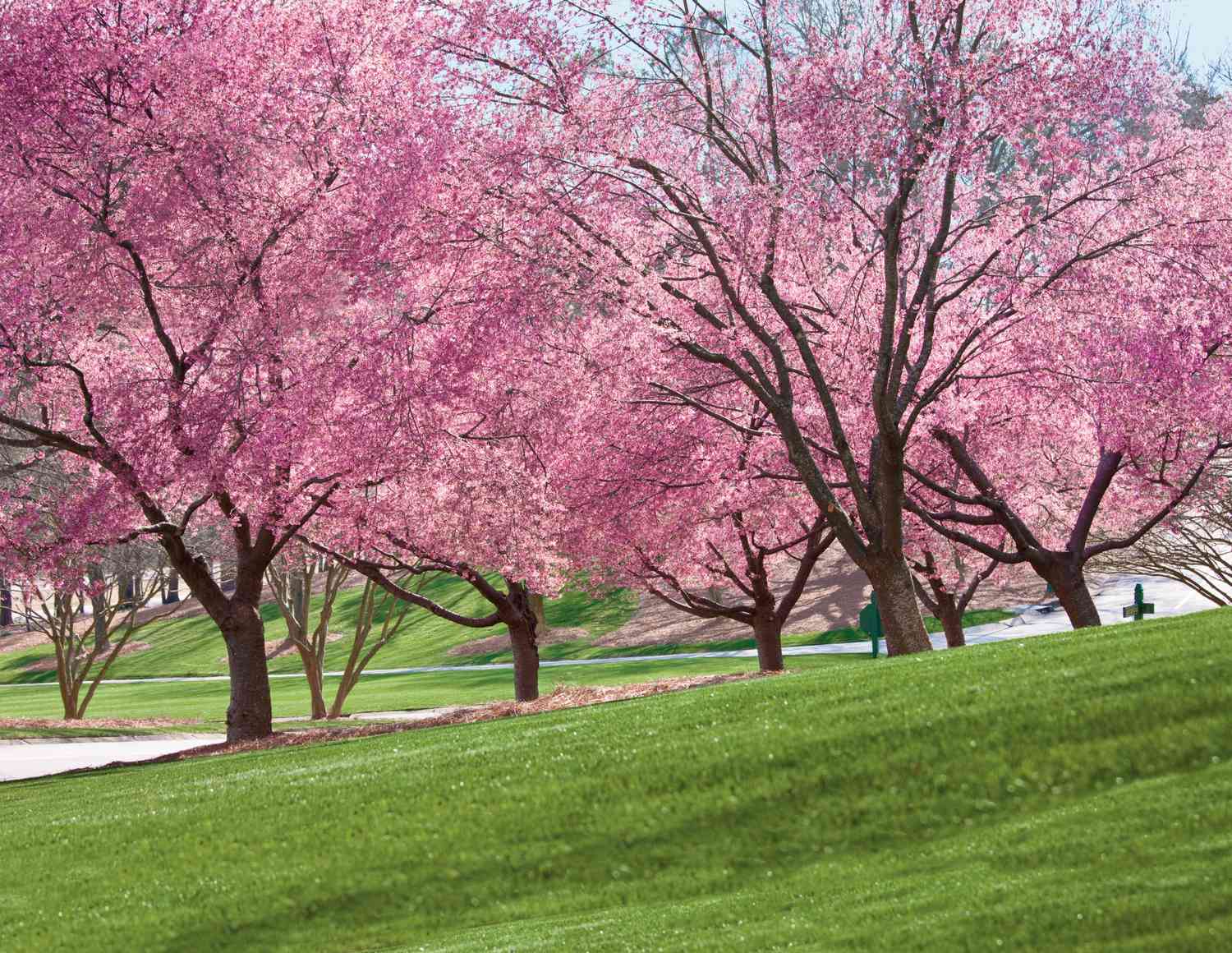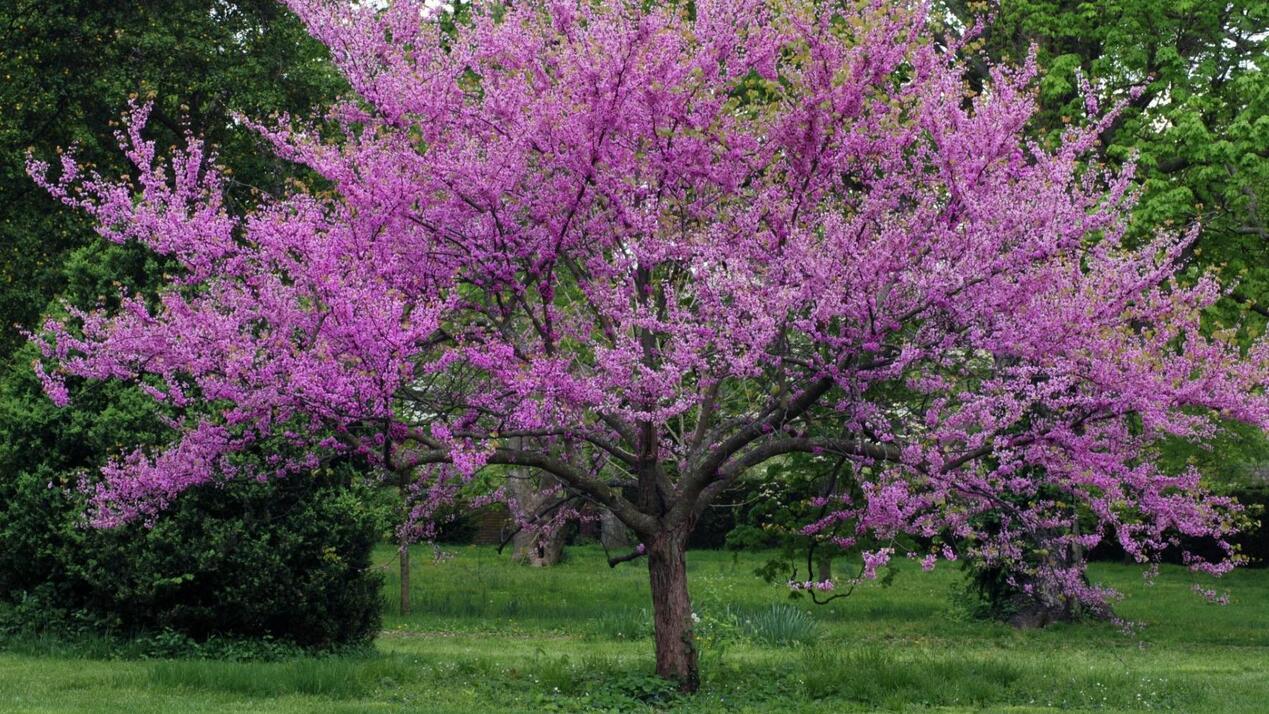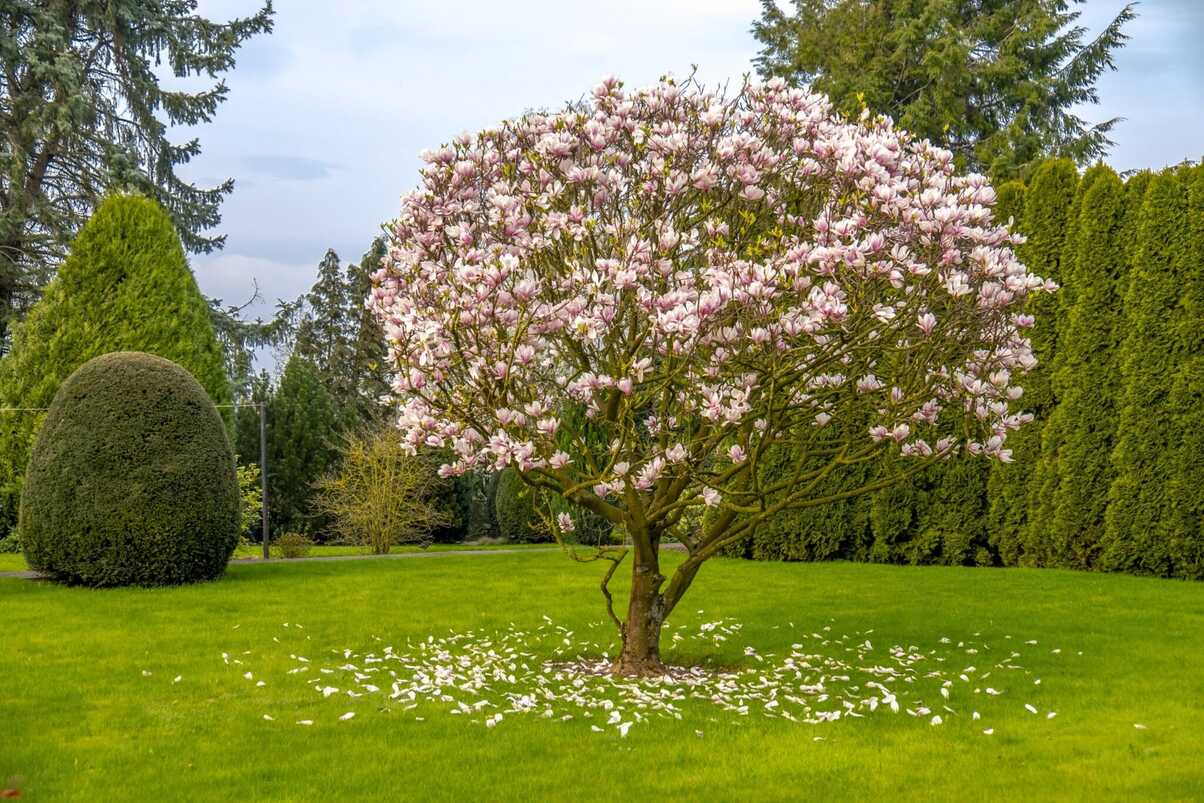Home>Gardening Techniques>Plant Care>How Tall Do Lime Trees Grow


Plant Care
How Tall Do Lime Trees Grow
Modified: January 22, 2024
Discover the ideal plant care for lime trees and learn how tall they can grow. Get expert tips on nurturing healthy lime trees in your garden.
(Many of the links in this article redirect to a specific reviewed product. Your purchase of these products through affiliate links helps to generate commission for Chicagolandgardening.com, at no extra cost. Learn more)
Table of Contents
Introduction
Welcome to the wonderful world of lime trees! These beautiful and versatile trees are not only a sight to behold, but they also offer a plethora of benefits for both your garden and your taste buds. Whether you’re a seasoned gardener or just starting out, understanding the basics of lime tree care, including how tall they can grow, is essential for their successful cultivation. In this article, we will explore the factors that influence lime tree height, the average height you can expect from different varieties, how to grow them in various climates, and techniques for controlling their height through pruning.
Lime trees, scientifically known as Citrus aurantifolia, are evergreen citrus trees that belong to the Rutaceae family. They are native to Southeast Asia and are widely cultivated for their aromatic fruits, commonly known as limes. These fruits are not only prized for their tangy flavor, but they are also a key ingredient in numerous culinary dishes and refreshing beverages.
One of the fascinating aspects of lime trees is their ability to grow to different heights, depending on several factors. Understanding these factors is crucial in ensuring the optimal growth and development of your lime tree. Factors such as the variety of lime tree, the environmental conditions in which it is grown, and proper care techniques all play a role in determining how tall a lime tree can ultimately become.
So, whether you’re dreaming of a dwarf lime tree suitable for small gardens or a towering lime tree that adds grandeur to your landscape, it’s important to have a solid understanding of what influences their height. In the following sections, we will delve deeper into these factors and provide you with the knowledge you need to cultivate thriving lime trees of various heights.
Lime Tree Overview
Lime trees are a stunning addition to any garden or landscape. With their glossy green leaves, fragrant blossoms, and vibrant fruits, they not only provide aesthetic appeal but also have practical uses. Lime trees are part of the citrus family and are native to warmer regions, thriving in tropical and subtropical climates.
These evergreen trees can reach heights ranging from 10 to 20 feet, depending on the variety and growing conditions. They have a rounded canopy and a dense growth habit, making them ideal for providing shade or creating privacy screens in your outdoor space. The branches of lime trees are adorned with thorns, acting as a natural defense against animals and pests.
Lime trees produce small, white flowers that are incredibly fragrant. The blossoms not only add beauty to the tree but also attract bees and other pollinators, ensuring the production of an abundance of fruit. The fruits themselves are small to medium-sized, with a round or oval shape, and have a thin, smooth rind that ranges in color from green to yellow when ripened. Limes are known for their tart and acidic flavor, making them a popular ingredient in various culinary dishes and drinks.
One of the remarkable characteristics of lime trees is their ability to bear fruit throughout the year. Depending on the variety, you may even find limes on your tree during multiple seasons. This continuous fruiting cycle ensures a bountiful supply of limes for your culinary needs.
Aside from their fruit-bearing potential, lime trees also offer other benefits. The aromatic leaves of the lime tree can be used to add a refreshing fragrance to your home or garden. In addition, lime trees can help purify the air by absorbing pollutants and releasing oxygen, creating a healthier environment.
Now that you have a general overview of lime trees, it’s time to explore the factors that influence their height and understand what determines the average height of different lime tree varieties. Let’s dive in!
Factors Affecting Lime Tree Height
The height of a lime tree is influenced by various factors, including genetics, growing conditions, and care practices. Understanding these factors can help you optimize your lime tree’s growth and ensure it reaches its full potential. Let’s take a closer look at the key factors that affect lime tree height:
- Variety: Lime trees come in different varieties, each with its own growth characteristics. Some varieties, such as the ‘Mexican’ or ‘Key’ lime tree, tend to stay relatively compact and have a smaller ultimate height, making them suitable for smaller gardens or container cultivation. On the other hand, varieties like the ‘Bearss’ or ‘Tahiti’ lime tree are known for their larger size and can reach heights of up to 20 feet or more. When selecting a lime tree, consider the variety’s growth habit to ensure it aligns with your space constraints and preferences.
- Rootstock: Lime trees are often grafted onto a rootstock, which can influence their growth characteristics. The rootstock used can affect the tree’s overall size, vigor, and tolerance to certain environmental conditions. For example, using a dwarfing or semi-dwarfing rootstock can help control the height of the tree, resulting in a more compact and manageable size. Conversely, using a vigorous rootstock may lead to a larger tree. Make sure to choose a rootstock that suits your desired tree height and growing conditions.
- Environmental Conditions: The environment in which a lime tree is grown plays a significant role in its height development. Lime trees thrive in warm, tropical or subtropical climates. They require full sunlight for optimal growth, so ensure that your tree is planted in an area with plenty of sun exposure. Adequate water supply is also essential, as lime trees prefer well-drained soil that is evenly moist. Extreme temperature fluctuations, frost, and strong winds can impact the growth and health of the tree, potentially affecting its ultimate height. Providing a sheltered location and implementing proper frost protection measures can help mitigate these factors.
- Care Practices: The way you care for your lime tree can influence its height and overall health. Pruning plays a crucial role in shaping and controlling the growth of the tree. Regular pruning not only helps maintain a desired height but also promotes proper airflow, reduces disease risks, and encourages fruit production. Fertilizing the tree with a balanced citrus fertilizer according to the manufacturer’s instructions can provide the necessary nutrients for healthy growth. Additionally, proper irrigation, pest control, and disease prevention practices are essential for optimal tree health and development.
By considering these factors and implementing appropriate care techniques, you can help your lime tree thrive and reach its maximum height potential. Now that we have explored the factors that affect lime tree height, let’s move on to understanding the average heights of different lime tree varieties.
Average Height of Lime Trees
The height of lime trees can vary depending on the variety and growing conditions. It’s important to have an idea of the average height a lime tree can reach so that you can plan accordingly when selecting a tree for your garden. Here are some estimates of the average heights of different lime tree varieties:
- ‘Mexican’ or ‘Key’ Lime: These compact lime trees typically reach a height of around 6 to 10 feet. They are well-suited for smaller spaces, container gardening, or growing indoors. Their smaller stature makes them easier to maintain and harvest.
- ‘Bearss’ or ‘Tahiti’ Lime: These larger lime trees can grow to a height of 12 to 20 feet or more. They have a more vigorous growth habit and are known for their abundant fruit production. Their taller size makes them an excellent choice for larger garden spaces where they can provide ample shade and privacy.
- Other Lime Varieties: There are additional lime tree varieties available, each with its own unique growth characteristics. Lime trees such as the ‘Kaffir’ lime or the ‘Australian finger’ lime may have different average heights depending on their specific genetic traits and growing conditions. It’s always best to research and consult local experts or nurseries to determine the average height of a particular lime tree variety.
It’s important to note that the provided average heights are estimations and can be influenced by factors such as rootstock used, pruning practices, and environmental conditions. With proper care and maintenance, lime trees have the potential to reach their maximum height in their ideal growing conditions.
Now that we have an understanding of the factors influencing lime tree height and the average heights of different lime tree varieties, let’s explore how to grow lime trees in various climates to ensure their successful cultivation.
Varieties of Lime Trees and their Heights
Lime trees come in a variety of cultivars, each with its own unique characteristics, including growth habit and ultimate height. Let’s explore some common lime tree varieties and their average heights:
- ‘Mexican’ or ‘Key’ Lime (Citrus aurantifolia): This variety of lime tree is known for its compact size, typically reaching a height of 6 to 10 feet. It has a bushy growth habit and is well-suited for small gardens, container cultivation, or even indoor growth. Despite its smaller stature, the ‘Mexican’ or ‘Key’ lime tree is a prolific producer of small, tangy limes that are widely used in cooking and mixology.
- ‘Bearss’ or ‘Tahiti’ Lime (Citrus latifolia): The ‘Bearss’ or ‘Tahiti’ lime tree is larger in size, capable of reaching heights of 12 to 20 feet or more. It has a more vigorous growth habit and a dense canopy of glossy leaves. This variety produces abundant medium-sized limes that have a slightly sweeter flavor compared to the ‘Mexican’ lime. Due to its taller stature, the ‘Bearss’ or ‘Tahiti’ lime tree is well-suited for larger gardens or landscape settings, providing shade and beauty in addition to its fruit-bearing capabilities.
- ‘Kaffir’ Lime (Citrus hystrix): The ‘Kaffir’ lime tree is known for its distinctive double-lobed leaves that are highly aromatic and commonly used in Southeast Asian cuisine. This lime tree variety typically reaches a height of 6 to 15 feet. Its compact size and attractive foliage make it a popular choice for both ornamental and culinary purposes.
- ‘Australian Finger’ Lime (Citrus australasica): The ‘Australian Finger’ lime tree is a unique lime variety native to Australia. It produces elongated, finger-like limes with a caviar-like texture, often used as an exotic garnish. This lime tree can grow anywhere from 6 to 20 feet in height, depending on the specific cultivar and growing conditions.
These are just a few examples of lime tree varieties and their typical heights. Keep in mind that environmental conditions, cultivation techniques, and rootstock used can affect the actual height of a lime tree. It’s always recommended to research specific lime tree varieties and consult with local experts or nurseries to determine their growth characteristics and suitability for your garden.
Now that we have explored the different lime tree varieties and their heights, let’s move on to the next section to understand how to grow lime trees in different climates to ensure their successful cultivation.
Growing Lime Trees in Different Climates
Lime trees are native to warm tropical and subtropical regions, but with proper care and attention, they can be grown in a wider range of climates. Here are some tips for successfully cultivating lime trees in different climate conditions:
1. Warm and Tropical Climates: Lime trees thrive in warm climates where temperatures stay above freezing throughout the year. If you live in a warm or tropical region, you’re in luck as these conditions are ideal for lime tree growth. Ensure that your lime tree receives ample sunlight, preferably 6 to 8 hours a day, and plant it in well-drained soil. Regular watering is essential to keep the soil moist, but be careful not to overwater as lime trees are sensitive to waterlogged conditions. Fertilize your tree with a balanced citrus fertilizer according to the manufacturer’s instructions, and monitor for pests and diseases common in your area.
2. Subtropical and Mediterranean Climates: Lime trees can also thrive in subtropical and Mediterranean climates where winters are mild and the risk of frost is minimal. When selecting a lime tree variety, choose one that is more tolerant of cooler temperatures, such as the ‘Bearss’ or ‘Tahiti’ lime. Plant your lime tree in a sheltered location, if possible, to protect it from strong winds and potential frost. Consider using protective measures like frost blankets or heaters during cold snaps or frosts to safeguard your tree.
3. Temperate Climates: Lime trees can be grown in temperate climates with cold winters and warm summers, but they may require additional care and protection during the colder months. Look for lime tree varieties that are more cold-tolerant, such as the ‘Mexican’ or ‘Key’ lime. Plant your lime tree in a well-drained location with good sun exposure, and consider using a microclimate strategy, such as planting near a south-facing wall or using protective covers during frosty periods. Mulching around the base of the tree can help maintain soil moisture and provide some insulation.
4. Indoor or Greenhouse Cultivation: If you live in a climate with harsh winters or unsuitable growing conditions, you can still enjoy fresh limes by growing lime trees indoors or in a greenhouse. Choose smaller lime tree varieties, like the ‘Mexican’ or ‘Key’ lime, which are more suited to container cultivation. Place your potted lime tree in a sunny spot indoors, or provide supplemental lighting in a greenhouse. Pay attention to proper drainage and watering, as indoor environments can be more prone to overwatering. You may need to hand-pollinate your indoor lime tree to aid in fruit production.
By considering the specific needs of lime trees and adapting your cultivation techniques to the climate conditions, you can successfully grow lime trees in a range of environments. Now, let’s explore pruning techniques that can help control the height of your lime tree.
Pruning Techniques for Controlling Lime Tree Height
Pruning is an essential practice for maintaining the health and shape of your lime tree, as well as controlling its height. Proper pruning techniques can help prevent the tree from becoming too tall or developing an overcrowded canopy. Here are some pruning techniques to consider for controlling the height of your lime tree:
1. Training Young Trees: Start shaping your lime tree from a young age to encourage a desirable growth habit. Remove any crossing or competing branches, and selectively prune branches to create a well-balanced structure. Encourage a central leader by selecting a strong, upright branch as the main trunk and removing competing leaders. This will promote upward growth and help maintain a manageable height as the tree matures.
2. Controlling the Canopy: As your lime tree grows, maintain an open and well-spaced canopy by regularly pruning overcrowded or inward-growing branches. This will improve airflow and sunlight penetration, reducing the risk of diseases and promoting overall tree health. Remove any dead, damaged, or diseased branches, as well as any suckers or water sprouts that emerge from the base of the tree. Keep in mind that a balanced canopy will help maintain a proportional height for your lime tree.
3. Height Reduction Pruning: If your lime tree has become too tall and exceeds your desired height, height reduction pruning can be performed. This technique involves selectively removing the upper branches to reduce the overall height of the tree. Make cuts just above a healthy, outward-facing bud or side branch for proper healing and to encourage new growth in desired directions. It’s important to note that excessive or drastic height reduction pruning should be avoided, as it can stress the tree and negatively impact its overall health.
4. Regular Maintenance Pruning: Ongoing maintenance pruning is important for controlling the height of your lime tree. This involves removing any vigorous upright shoots or branches that grow beyond the desired height, keeping the overall size of the tree in check. It’s best to perform this type of pruning during the dormant season to minimize stress on the tree. Additionally, monitor and prune any crossed or rubbing branches to prevent structural issues and damage to the tree.
Remember, when pruning your lime tree, always use clean and sharp pruning tools to make precise cuts without causing unnecessary stress or damage to the tree. It’s also important to consider the specific growth habit and requirements of your lime tree variety when implementing pruning techniques.
By applying proper pruning techniques, you can maintain a desired height for your lime tree, promote healthy growth, and enhance the overall aesthetics of your tree. With a well-pruned lime tree, you can enjoy its beauty and harvest limes conveniently within reach.
Now that we’ve explored pruning techniques, let’s summarize the key points in the following section.
Conclusion
Cultivating lime trees is a rewarding endeavor that allows you to enjoy the beauty, fragrance, and culinary delights of these versatile trees. Understanding the factors that influence lime tree height, such as variety, rootstock, environmental conditions, and care practices, is essential for successful cultivation. Different lime tree varieties have varying heights, with some staying compact at around 6 to 10 feet, while others can reach up to 20 feet or more. By selecting the appropriate variety and implementing proper care techniques, you can achieve the desired height for your lime tree.
When growing lime trees, it’s important to consider the specific climate in which you reside. Lime trees thrive in warm to tropical climates, but with adequate protection and care, they can also be grown in subtropical and temperate regions. In colder climates, growing lime trees in containers indoors or in a greenhouse is a viable option. Providing the right conditions, such as sunlight, well-drained soil, and proper watering, is crucial for their growth and productivity in any climate.
Pruning plays a significant role in shaping and controlling the height of lime trees. Starting with training young trees and maintaining a well-spaced canopy, you can influence their growth habit. Height reduction pruning and regular maintenance pruning help keep the tree at a manageable height and ensure its overall health.
Whether you have a smaller space and opt for a compact lime tree or wish to adorn your landscape with a taller variety, cultivating lime trees can bring beauty, fragrance, and a bountiful harvest. With proper care and attention, lime trees can thrive and provide a constant supply of flavorful limes for culinary delights and refreshing beverages.
So, embrace the world of lime trees and enjoy the many benefits they offer. With the knowledge gained from this article, you can confidently grow and maintain lime trees of various heights, creating a vibrant and productive addition to your garden or landscape.










